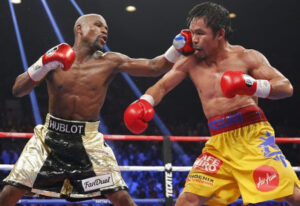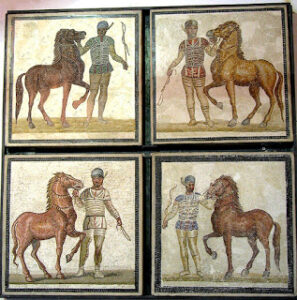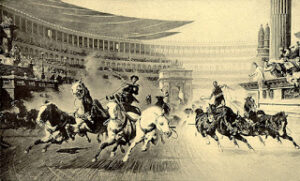Given that I am the author of a comprehensive martial arts and self-defence book you might assume that I have a considerable interest in boxing. Those of you that have invested in a copy of my book will know that I do not underrate the potential potency of a trained boxer in a fight. Professional boxing, however, is of very little interest to me so I have not been paying much attention to the hype surrounding the Pacquiao-Mayweather fight. A considerable number of real life concerns has meant that it was only this morning that I heard about the size of the fees involved for this fight.

The purse for this fight was set at $300 million to be split 60/40 in Mayweather’s favour. Additional funds will come from pay-per-view royalties and various other sources. It is an amazing amount of money for a single fight. A mere pinch of this could solve most of those real life concerns I mentioned. Some people will say that it is wrong for sportsmen to be paid this sort of money but it is worth remembering the boxers are only getting a fraction of the actual money involved. The promoters and TV companies must be making many, many times this. Is it really wrong that the fighters who take the blows get a reasonable cut of this fortune? Both fighters have trained and worked hard to get to where they are and a career in professional boxing is not without considerable real risk.
Yesterday my blog was about competition and I touched on the role sports can play in redirecting certain traits of the human psyche. Professional sports are one of the better value means to do this. The money paid to many professional sportsmen may seem obscene, but it is a fraction of the money the sport actually generates. Most professional sports factions are profit making and therefore self-funding. A team that fails to make money probably lacks a sufficient fanbase and is not that effective in fulfilling its sociological role, it can be argued.
As I pointed out in the previous blog, not all sporting diversions are desirable. The Olympics is a good example of a very poor investment in time and money. Thousands of millions of dollars spent for just a couple of weeks of sport. Many of these sports generate so little interest tickets are given away for free to try and fill seats. The up and coming Olympics in Brazil is being used as an excuse for a land grab. Thousands of poor people are being forced out of their homes at gunpoint. Across the span of two decades it is estimated that the Olympic games have displaced more than two million people, often the most disadvantaged in communities. So much for peace and brotherhood through sport!

Following a faction or professional team is nothing new. “Circuses” of “Bread and Circuses” refers to chariot racing, Rome’s most popular sport. The chariot racers were divided into four factions, each with a distinctive colour. Fans would wear these colours and cheer for their chosen side. The emotional investment in their team would be familiar to anyone who has encountered modern day sports fans. Gladiators were also idolised and subject to marketing, souvenirs etc. Gladiators were followed as individuals, more like modern boxers. I have not yet found any references to fans favouring specific ludi. I don’t doubt that both sports had their “stats freaks”.


I have added a new link to yesterday’s blog. The comments at the start about the social role of the races is interesting:
“For the people—who once conferred imperium, symbols of office, legions, everything—now hold themselves in check and anxiously desire only two things, the grain dole and chariot races in the Circus” (Satires 10.77-81)…… Juvenal has put his finger on two of the most important aspects of Roman chariot races—their immense popularity and the pleasure they gave the Roman people, and the political role they played during the empire in diverting energies that might otherwise have gone into rioting and other forms of popular unrest.”